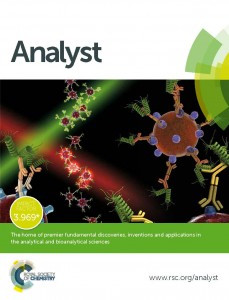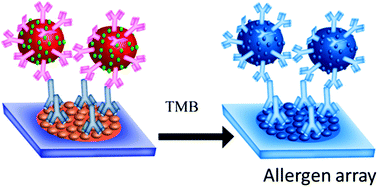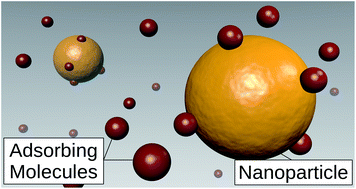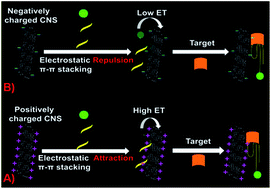Take a look at our new HOT articles just published in Analyst and free for you for the next couple of weeks: 
Fabrication of disposable electrochemical devices using silver ink and office paper
W. R. de Araujo and T. R. L. C. Paixão
Analyst, 2014, Advance Article
DOI: 10.1039/C4AN00097H, Paper
A hybrid paper and microfluidic chip with electrowetting valves and colorimetric detection
Fei He, Jeff Grimes, Samuel D. Alcaine and Sam R. Nugen
Analyst, 2014, Advance Article
DOI: 10.1039/C3AN01516E, Paper
An electrochemiluminescent microRNA biosensor based on hybridization chain reaction coupled with hemin as the signal enhancer
Pu Zhang, Xiaoyan Wu, Yaqin Chai and Ruo Yuan
Analyst, 2014, Advance Article
DOI: 10.1039/C4AN00284A, Paper
Investigating drug induced changes in single, living lymphocytes based on Raman micro-spectroscopy
Iwan W. Schie, Lucas Alber, Amy L. Gryshuk and James W. Chan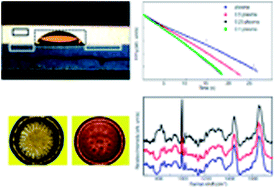
Analyst, 2014, Advance Article
DOI: 10.1039/C4AN00250D, Paper
Single vs. two-photon microscopy for label free intrinsic tissue studies in the UV light region
Vitalijs Zubkovs, Frédéric Jamme, Slavka Kascakova, Franck Chiappini, François Le Naour and Matthieu Réfrégiers
Analyst, 2014, Advance Article
DOI: 10.1039/C4AN00203B, Communication
Characterization of biofluids prepared by sessile drop formation
Karen A. Esmonde-White, Francis W. L. Esmonde-White, Michael D. Morris and Blake J. Roessler
Analyst, 2014, Advance Article
DOI: 10.1039/C3AN02175K, Paper
DNA hybridization detection with 100 zM sensitivity using piezoelectric plate sensors with an improved noise-reduction algorithm
Ceyhun E. Kirimli, Wei-Heng Shih and Wan Y. Shih
Analyst, 2014, Advance Article
DOI: 10.1039/C4AN00215F, Paper
Detection of zeptomole quantities of nonfluorescent molecules in a 101 nm nanochannel by thermal lens microscopy
T. H. H. Le, K. Mawatari, H. Shimizu and T. Kitamori
Analyst, 2014, Advance Article
DOI: 10.1039/C4AN00344F, Paper 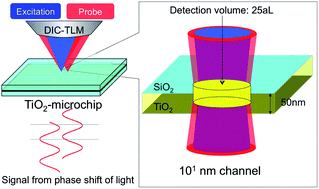
Microfluidic-SERS devices for one shot limit-of-detection
Donghyuk Kim, Antonio R. Campos, Ashish Datt, Zhe Gao, Matthew Rycenga, Nathan D. Burrows, Nathan G. Greeneltch, Chad A. Mirkin, Catherine J. Murphy, Richard P. Van Duyne and Christy L. Haynes
Analyst, 2014, Advance Article
DOI: 10.1039/C4AN00357H, Paper
Touch spray mass spectrometry for in situ analysis of complex samples
Kevin S. Kerian, Alan K. Jarmusch and R. Graham Cooks
Analyst, 2014, Advance Article
DOI: 10.1039/C4AN00548A, Paper
Criteria for sensitivity enhancement by compressed sensing: practical application to anisotropic NAD 2D-NMR spectroscopy
Krzysztof Kazimierczuk, Olivier Lafon and Philippe Lesot
Analyst, 2014, Advance Article
DOI: 10.1039/C4AN00381K, Paper
Comments Off on HOT articles in Analyst















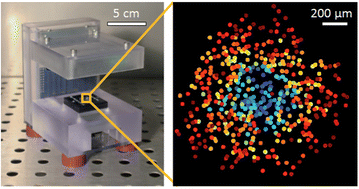
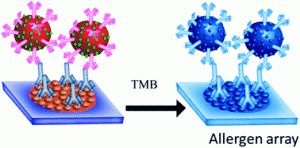 nt surveys from Allergy UK have shown that the rates of allergy are increasing throughout the world, affecting up to 30-35 % of people at some point during their lives, in some cases with fatal consequences. In vitro testing of specific Immunoglobin E (IgE) reactivities is thought to be able to significantly improve diagnostic accuracy and management in primary care. IgE plays a significant role in allergic conditions. Current methods for the sensitive and accurate detection of specific IgE reactivities are expensive; require significant sample preparation and investment in equipment. There is a need to provide a cheap, rapid, sensitive and specific test for IgE reactivities.
nt surveys from Allergy UK have shown that the rates of allergy are increasing throughout the world, affecting up to 30-35 % of people at some point during their lives, in some cases with fatal consequences. In vitro testing of specific Immunoglobin E (IgE) reactivities is thought to be able to significantly improve diagnostic accuracy and management in primary care. IgE plays a significant role in allergic conditions. Current methods for the sensitive and accurate detection of specific IgE reactivities are expensive; require significant sample preparation and investment in equipment. There is a need to provide a cheap, rapid, sensitive and specific test for IgE reactivities.